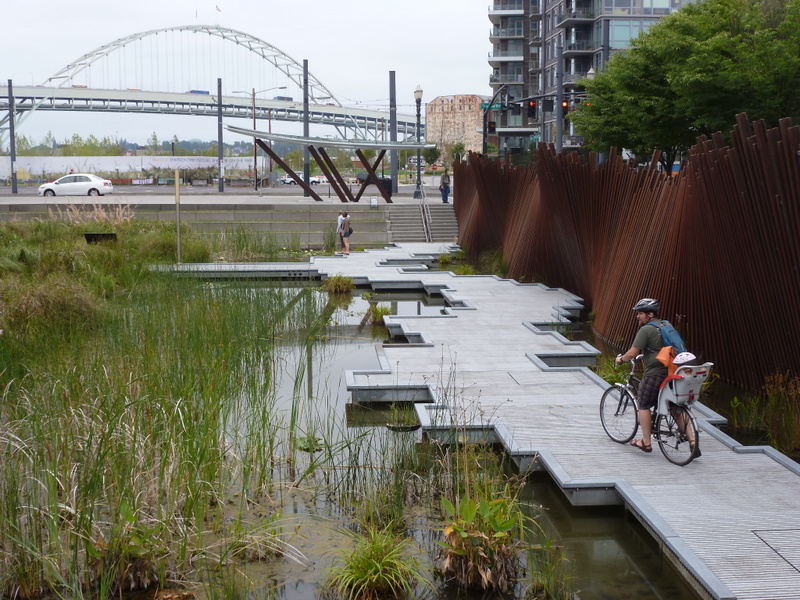Starting in early 2017, citizens curious about how Chicago’s bioswales and porous asphalt handled storms could log on and watch real-time data upload to their screens. Though the portal is no longer being updated, the test project it represented was a success. This May, the City Tech Collaborative, based at the UI LABS nonprofit research center that tests urban technological services, announced that they had spent the last 18 months gathering live data on several green infrastructure stormwater solutions in Chicago.
The test used cloud-based stormwater management analysis and control software developed by Opti (Boston).
The goal
For City Tech, this collaboration investigated a basic question: Can we keep real-time tabs on green infrastructure performance?
“Cities had lots invested in green infrastructure, but to date, we did not know of a way to capture performance of investments at scale across a city,” said David Leopold, the director of project management at City Tech.
So, City Tech brought together the City of Chicago, Opti, Microsoft, and the engineering firm AECOM (Los Angeles) to test this system’s capabilities. The group installed monitoring devices on four green stormwater management solutions: a bioswale, porous asphalt, a permeable paver and infiltration planter duo, and a permeable paver and tree-pit filter pairing.
How it worked
The technology installations are the same no matter the management solution: a commercial ultrasonic level sensor and a microcontroller — basically a mini computer — connect to a wireless and solar-powered communication station. The station relays data from the level sensor into Microsoft’s data cloud. Opti’s software reformats the data into useful information on the amount of rainfall, humidity, temperature, and drainage at the sites.
After 18 months, Opti’s system was collecting accurate data from each test area and relaying that information to anyone interested in how Chicago’s green infrastructure performed, Leopold said. Typically, this sort of data would be available only to those who paid for an installation, but Chicago wrote an extra bit of code to make the information public.
A real-time example
Whether Chicago will analyze this data for green infrastructure planning is undecided. But other customers using Opti’s software have gleaned insightful feedback.
In Ormond Beach, Fla., real-time data analysis kept flooding at bay, explained Marcus Quigley, CEO and founder of Opti. If the water management solution regulates storage, the system can include a valve. When the sensors and software determine that water needs to be released — for example, if a built-in storm tracker detects an incoming downpour —the system automatically drains down the storage volume in preparation.
Before Hurricane Irma hit Florida last year, Ormond Beach installed these types of sensors on five lakes that are prone to flooding. The weather-respondent valves on the lakes’ drainage system kicked in before the rain. While Irma dropped less precipitation than predicted, the lakes still didn’t overflow.
Prompting better understanding
Quigley said that he hopes digital insights into green infrastructure performance will spark more conversations about how municipalities and businesses handle stormwater. To foster these conversations, Opti has brought clients together to help them learn from each other’s work but wants the collaborations to become more common.
Ultimately, he sees sharing of green infrastructure’s successes and low points as the future of stormwater tracking technology. Especially for publicly funded stormwater solutions, people need to understand how their green infrastructure is working, Quigley said. “What does it mean when it rains in your community, and how much did that infrastructure reduce flooding?”
— Leslie Nemo, The Stormwater Report
















So smart technology.
what is the information about?